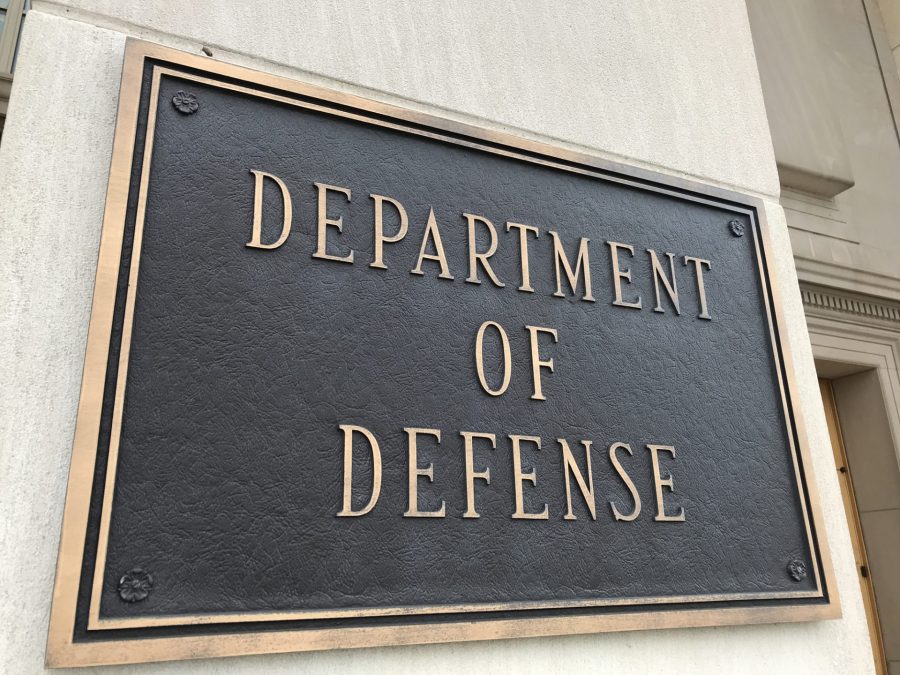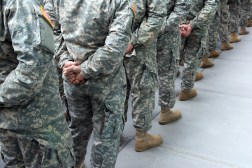Pentagon updates guidance for development, fielding and employment of autonomous weapon systems

The Pentagon has provided updated guidance for Defense officials who will be responsible for overseeing the design, development, acquisition, testing, fielding and employment of autonomous weapon systems — and created a new working group to facilitate senior-level reviews of the technology.
The move comes as the U.S. military is embracing artificial intelligence, unmanned platforms and other tech that could give weapon systems much more autonomy than those of previous eras.
The updated DOD Directive 3000.09, “Autonomy in Weapon Systems,” was signed off by Deputy Defense Secretary Kathleen Hicks and went into effect Wednesday. It’s the first major update since 2012.
An autonomous weapon system is “a weapon system that, once activated, can select and engage targets without further intervention by an operator. This includes, but is not limited to, operator-supervised autonomous weapon systems that are designed to allow operators to override operation of the weapon system, but can select and engage targets without further operator input after activation,” according to the Pentagon’s definition.
A semi-autonomous weapon system is defined as “a weapon system that, once activated, is intended to only engage individual targets or specific target groups that have been selected by an operator.” So-called “fire and forget” or lock-on-after-launch homing munitions are some examples.
According to the updated directive, these kinds of technologies must be designed to allow commanders and operators to exercise “appropriate levels of human judgment” over the use of force. And they will be put through “rigorous” hardware and software verification and validation as well as “realistic” operational test and evaluation.
With some exceptions, before autonomous weapons can enter formal development they must be approved by the undersecretary of defense for policy, undersecretary of defense for research and engineering, and the vice chairman of the Joint Chiefs of Staff. Additionally, the undersecretary of defense for policy, undersecretary of defense for acquisition and sustainment and the vice chairman must sign off again before they can be fielded.
Notably, capabilities that are modifications of an existing non-autonomous weapon system — or modified versions of previously approved autonomous weapon systems “whose system algorithms, intended mission sets, intended operational environments, intended target sets, or expected adversarial countermeasures substantially differ from those applicable to the previously approved weapon systems so as to fall outside the scope of what was previously approved in the senior review” — will require a new senior-level review and sign-off before entering formal development and again before they can be fielded.
Capabilities that won’t be required to undergo the same high-level review include semi-autonomous weapon systems used to apply lethal or non-lethal force “without any modes of operation in which they are intended to function as an autonomous weapon system.”
Other autonomous technologies that are more defensive in nature and not subject to the same senior-level review include: operator-supervised autonomous weapon systems used to select and engage materiel targets to intercept “attempted time-critical or saturation attacks” against installations and their personnel; onboard and/or networked defense of platforms with onboard personnel; operator-supervised autonomous weapon systems used to select and engage materiel targets for defending operationally deployed drones and robotic vehicles; and autonomous weapon systems used to apply non-lethal, “non-kinetic” force against materiel targets in accordance with DOD Directive 3000.03E.
The guidance also calls for the establishment of training, doctrine, tactics, techniques and procedures that are applicable to capabilities that are developed and fielded.
“Persons who authorize the use of, direct the use of, or operate autonomous and semiautonomous weapon systems will do so with appropriate care and in accordance with the law of war, applicable treaties, weapon system safety rules, and applicable rules of engagement,” it said. “The use of AI capabilities in autonomous or semi-autonomous weapons systems will be consistent with the DoD AI Ethical Principles.”
The oversight protocols are intended to ensure that autonomous weapons will function as intended, be robust against enemy countermeasures, and minimize the likelihood and negative consequences of system failures.
Autonomous and semi-autonomous capabilities will be expected to “complete engagements within a timeframe and geographic area, as well as other relevant environmental and operational constraints, consistent with commander and operator intentions. If unable to do so, the systems will terminate the engagement or obtain additional operator input before continuing the engagement,” the directive said.
To reduce the risks of an “unintended engagement” or operational interference by adversaries or others, hardware and software are expected to be designed with system safety, anti-tamper mechanisms, and cybersecurity solutions in accordance with DOD Instruction 8500.01 and Military Standard 882E; human-machine interfaces and controls; and technologies and data sources that are transparent to, auditable by, and “explainable” by relevant personnel.
The 20-page updated guidance is far-reaching and must be adhered to by the Office of the Security of Defense, military departments, Office of the Chairman of the Joint Chiefs of Staff, Joint Staff, combatant commands, Office of Inspector General, Defense agencies, DOD field activities, and other organizations within the department.
The Pentagon noted that it does not apply to unguided munitions; munitions that are remotely guided by an operator; mines; unexploded explosive ordnance; unarmed platforms or autonomous or semi-autonomous systems that are not considered “weapon systems.”
Notably, autonomous or semi-autonomous cyberspace capabilities are not subject to Directive 3000.09.
“The cyber systems were excluded, I believe, from the original directive published in 2012. And this policy change and this update to the directive … does not change that. There are a number of different policies that govern the development and deployment and use of cyber systems. And the department did not believe that adding a cyber requirement to the autonomous weapon system directive was necessary at this time,” Michael Horowitz, director of the Pentagon’s emerging capabilities policy office, told DefenseScoop during a call with reporters on Wednesday to discuss Directive 3000.09.
To help implement the guidance, the Pentagon is establishing a new “Autonomous Weapon Systems Working Group” to support senior leaders in “considering the full range of relevant DoD interests during the review of autonomous weapon systems” before they move into a formal development pipeline and before they are fielded.
The working group will consist of representatives from the OSD policy, A&S and R&E directorates; Chief Digital and AI Office (CDAO); Office of the Director of Operational Test and Evaluation; Joint Staff; and Office of General Counsel.
The group will also advise leaders of the military departments, U.S. Special Operations Command, and directors of Defense agencies or DOD field activity on whether a given weapon system requires senior-level approval under Directive 3000.09. The panel will also help identify and provide recommendations on “addressing potential issues presented by a given weapon system during a potential senior-level review.”
Horowitz said the new working group is meant to advance “good governance.”
“What the autonomous weapons working group does is facilitate aggregating the information that senior leaders would need … to be able to effectively make decisions; to, you know, essentially put the paper package together to be able to have an effective review process to ensure that either prior to development or … prior to fielding that a proposed autonomous weapon system fit with the requirements laid out” in the directive, he said.
The panel won’t be a decision-making body, he suggested.
“The point of the working group is essentially to facilitate the aggregation of the information that senior leaders would need to make responsible decisions about potential autonomous weapon systems,” Horowitz said.
The updated guidance isn’t a radical departure from the previous iteration. It was meant to provide “clarifications and refinements” and comply with requirements that the guidance be updated every 10 years or so, according to Horowitz.
“There are essentially a lot of things that … maybe were not laid out explicitly in the original directive that may have contributed to some of the maybe perceptions of confusion” about DOD policy, he told DefenseScoop. “We wanted to clean as much of that up as possible.”
Updated on Jan. 25, 2023: This story has been updated to note the types of autonomous and semi-autonomous weapon systems that aren’t subject to the same requirements for senior-level review as other autonomous or semi-autonomous weapon systems.






